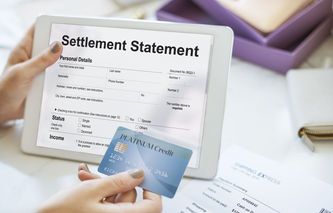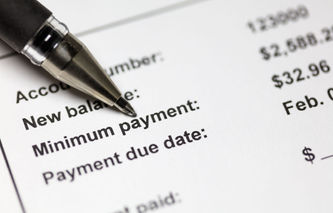In addition to using a credit card to make purchases, most offer the cardholder the convenience of a cash advance. While the process of obtaining an advance is as simple as walking up to an ATM, the cost of taking out an advance is quite high.
In this article, we're going to talk about withdrawing a cash advance using a credit card. As part of that discussion, we'll review the process of obtaining an advance, their limits, as well as the associated fees. Then we'll summarize this topic by discussing the pros and cons of these advances.
Cash Advances and Credit Cards
The process of obtaining a cash advance is relatively simple. A credit card will work in most ATMs the same way as a debit card. Once the cash is dispensed from the machine, most of those similarities quickly disappear. Credit card companies also provide cardholders with the opportunity for a cash advance using credit card checks, which often accompany monthly statements received in the mail.
Fees and Limits
Online billing or paper credit card statements will usually indicate the limit for a cash advance. Depending on the card issuer, this may be referred to as a Cash Credit Line or a Cash Advance Limit. The advance limit will always be less than the total credit limit. A general rule of thumb is the cash advance limit is about 20% of the total credit limit. For example, a card with a total credit limit of $10,000 would carry a cash advance limit of roughly $2,000.
When a credit card is used to pay for goods or services, the merchant pays the issuer a variety of transaction fees. These fees are usually unknown to the consumer, and the prices charged for the goods or services are higher to reflect the payment of these fees.
In the same way, the issuing company charges the cardholder a variety of fees when it's used to provide a cash advance. The example below appeared in the actual pricing and terms for a credit card offer, and specifically applied to cash advances:
Transaction Fees: $10 per transaction or 3% of the advance, whichever is greater.
Interest Rate: APR charges of 19% to 24%, depending on the creditworthiness of the cardholder. Unlike merchant purchases, interest charges apply starting on the first day of a withdrawal.
ATM Usage Fees: according to the American Bankers Association, the average ATM charges a fee of around $2.50 per transaction.
Using the above information, if the cardholder wanted a $100 cash advance for one month, the total fees associated with the transaction would include:
Transaction Fee: $10.00
Interest Charges: $2.00 (assumes an APR of roughly 24%)
ATM Usage Fee: $2.50
In the above example, the total of all fees for the $100 cash advance is $14.50; demonstrating how costly this convenience is to the cardholder.
Note: You can also rely on independent applications for cash advances. Alternatively, some money transfer platforms like Cash App lend small personal loans. If you'd like to break down your purchase because you're short of cash, apps like Klarna offer flexible payments on your purchases, including via debit cards.
Pros and Cons of Advances
Charging fees totaling nearly 15% to borrow money for one month might seem high, but there is at least one very good reason to take out an advance. The big disadvantage of this transaction is the cost. The fees, coupled with the relatively high APR charged on this loan, make taking out a cash advance financially expensive.
Using a credit card is convenient; unfortunately, it's sometimes too convenient. Using a credit card to pay off the balance on another card or a loan is a bad idea. A cash advance on a credit card is perhaps one of the costliest legal loans in the marketplace today.
There is only one circumstance under which an advance makes any sense at all. When all other options have been exhausted, and an emergency source of cash is still needed, then it's okay to use a credit card.




